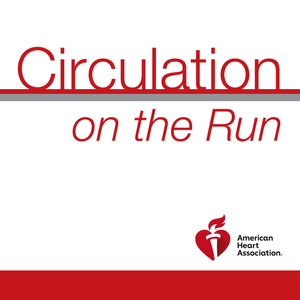
Circulation on the Run
Greg Hundley, MD and Peder Myhre, MD, PhD
All episodes
Best episodes
Top 10 Circulation on the Run Episodes
Goodpods has curated a list of the 10 best Circulation on the Run episodes, ranked by the number of listens and likes each episode have garnered from our listeners. If you are listening to Circulation on the Run for the first time, there's no better place to start than with one of these standout episodes. If you are a fan of the show, vote for your favorite Circulation on the Run episode by adding your comments to the episode page.
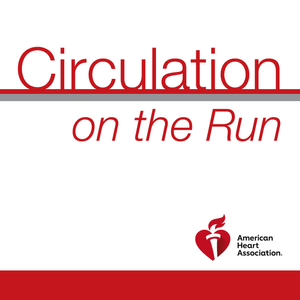
Circulation August 30, 2022 Issue
Circulation on the Run
08/29/22 • 19 min
This week, please join author Rod Stables and Associate Editor Nick Mills as they discuss the article "Routine Pressure Wire Assessment Versus Conventional Angiography in the Management of Patients With Coronary Artery Disease: The RIPCORD 2 Trial."
Dr. Carolyn Lam:
Welcome to Circulation on the Run, your weekly podcast, summary and backstage pass through the journal and its editors. We're your co-hosts! I'm Dr. Carolyn Lam, associate editor from the National Heart Center and Duke National University of Singapore.
Dr. Greg Hundley:
And I'm Dr. Greg Hundley, Associate Editor, Director of the Pauley Heart Center at VCU Health in Richmond, Virginia.
Well, Carolyn, this week's feature... Very interesting. There is a lot of information about using fractional flow reserve during contrast coronary angiography. But how does that compare to just reviewing the angiograms when managing patients with coronary artery disease?
Well, we are going to hear some results from the RIPCORD 2 trial, and they may surprise you a little bit. But, before we get to that interesting feature discussion with authors and editors, how about we grab a cup of coffee and dive into some of the other articles in the issue?
Dr. Carolyn Lam:
Yeah, let's do that, Greg. Do you have a paper to share first?
Dr. Greg Hundley:
Oh, thanks Carolyn. Sure.
So Carolyn, as we know, Apolipoprotein B or apoB, provides an integrated measure of atherogenic risk. But whether apoB levels and apoB lowering hold incremental predictive information on residual risk after acute coronary syndromes, beyond that provided by low density, lipoprotein cholesterol, or LDLC, that's uncertain. So Carolyn this study emanates from the Odyssey Outcomes trial, which compared the Proprotein Convertase Subtilisin/Kexin Type 9 inhibitor, Evolocumab with placebo in 18,924 patients with recent ACS and elevated atherogenic lipoproteins despite optimized statin therapy. Now the primary outcome was major adverse cardiovascular events. So MACE was coronary heart disease, death, nonfatal myocardial infarction, fatal non-fatal ischemic stroke, and hospitalization for unstable angina. And associations between baseline ApoB or ApoB at four months and MACE were assessed in adjusted Cox proportional hazards and propensity score matched models over median of 2.8 years.
Dr. Carolyn Lam:
Oh, right. So what were the results, Greg?
Dr. Greg Hundley:
Right, Carolyn so impatience with recent ACS and elevated atherogenic lipoproteins, MACE increased across baseline ApoB strata, and now evolocumab reduced MACE across all strata of baseline ApoB, with larger absolute reductions in patients with higher baseline levels. Lower achieved ApoB was associated with lower risk of MACE, even after accounting for achieved LDLC or Non-HDLC indicating that ApoB provides incremental information. And therefore, Carolyn, if it is modified achievement of an ApoB level less than or equal to 35 milligrams per deciliter may reduce lipoprotein attributable residual risk after ACS. Isn't that interesting?
Dr. Carolyn Lam:
Yes. Very nice, Greg. Thank you. This next paper is a pre-specified analysis of the EMPEROR-Preserved trial, looking at patients with and without diabetes.
Dr. Greg Hundley:
So remind us, Carolyn, what was the EMPEROR-Preserved trial and what did it show?
Dr. Carolyn Lam:
Well, in EMPEROR-Preserved Empagliflozin, the SGLT2 inhibitor reduced risk of the composite of cardiovascular death or heart failure hospitalization, as well as first and recurrent heart failure hospitalizations and slowed renal function decline in patients with heart failure and an ejection fraction greater than 40%. So the current paper sought to determine if effects were consistent in patients with, and without diabetes, of the almost 6,000 patients enrolled, 49% had diabetes. The risk of adverse outcomes, first of all, was higher in patients with diabetes. Now the treatment effect of Empagliflozin was however, similar in that Empagliflozin reduced the rate of the primary outcome and total heart failure hospitalization, irrespective of diabetes status. The effect of Empagliflozen falls into attenuate GFR decline, however, was also present in patients with, and without diabetes, although more pronounced in patients with diabetes. Now across all these three endpoints, the effect of Empagliflozen did not differ in patients with prediabetes or normal glycemia. And importantly, there was no increased risk of hypoglycemic events in either subgroup compared with placebo. So a very nice paper there. And that was from Dr. Gerasimos Filippatos from Athens University Hospital Attikon and colleagues.
Dr. Greg Hundley:
Wow, Carolyn, just really interesting information coming out of the world of SGLT2 innovation. Well, Carolyn, my next paper comes to us from the world of preclinical sci...
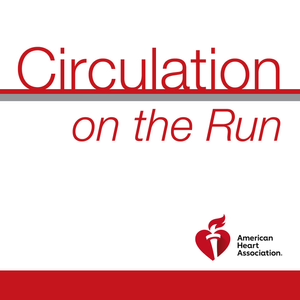
Circulation September 6, 2022 Issue
Circulation on the Run
09/05/22 • 24 min
This week, please join author Keith Channon as he discusses the article "Risk of Myocarditis After Sequential Doses of COVID-19 Vaccine and SARS-CoV-2 Infection by Age and Sex."
Dr. Carolyn Lam:
Welcome to Circulation on the Run, your weekly podcast summary and backstage pass to the journal and its editors. We're your co-hosts, I'm Dr. Carolyn Lam, associate editor from the National Heart Center and Duke-National University of Singapore.
Dr. Greg Hundley:
And I'm Dr. Greg Hundley, associate editor, director of the Pauley Heart Center at VCU Health in Richmond, Virginia.
Dr. Carolyn Lam:
Oh, Greg, today's feature paper, something that's really been discussed a lot in the press and in lay public as well, the risk of myocarditis following sequential doses of the COVID-19 vaccine and SARS-CoV-2 infection by age and sex. Everyone's going to want to tune into that one. But before we get there, shall we go through some of the key papers in today's issue?
Dr. Greg Hundley:
You bet, Carolyn. How about if I go first?
Dr. Carolyn Lam:
Please.
Dr. Greg Hundley:
So Carolyn, this first manuscript involves the world of machine learning and ECG interpretation. And as you know, novel targeted treatments increase the need for prompt hypertrophic cardiomyopathy detection; however, it's low prevalence, 0.5%, and resemblance to common diseases really present challenges. So Carolyn, these authors, led by Dr. Rahul Deo from Brigham and Women's Hospital, sought to develop machine learning models to detect hypertrophic cardiomyopathy and differentiate it from other cardiac conditions using EKGs and echocardiograms with a robust generalizability across multiple cohorts.
So Carolyn, what did they do? They used single-institution hypertrophic cardiomyopathy EKG models that were then trained and validated on data from three academic medical centers in the United States and Japan using a federated learning approach, which enables training on distributed data without data sharing. Models were validated on held out test sets for each institution and from a fourth academic medical center and were further evaluated for discrimination of hypertrophic cardiomyopathy from aortic stenosis, long-standing hypertension, and cardiac amyloidosis. And then finally, automated detection was compared to manual interpretation by three cardiologists on a data set with a realistic hypertrophic cardiomyopathy prevalence.
Dr. Carolyn Lam:
Wow, incredible. So what were the results?
Dr. Greg Hundley:
Right, Carolyn. So the authors identified 74,476 EKGs for 56,129 patients and 8,392 echocardiograms for 6,825 patients across the four academic medical centers. Now, while ECG models trained on data from each institution displayed excellent discrimination of hypertrophic cardiomyopathy on internal test data, the generalizability was limited, most notably for a model trained in Japan and then subsequently tested in the United States. Now, however, when trained in a federated manner, discrimination of hypertrophic cardiomyopathy was excellent across all institutions, including for phenotypic subgroups. The models further discriminated hypertrophic cardiomyopathy from hypertension, aortic stenosis, and cardiac amyloid. Analysis of ECG and echocardiography paired data from 11,823 patients from an external institution indicated a higher sensitivity of automated HCM detection at a given positive predictive value compared with cardiologists.
So Carolyn, in conclusion, federated learning improved the generalizability of models that use EKGs and echocardiograms to detect and differentiate hypertrophic cardiomyopathy from other causes of left ventricular hypertrophy compared to training within a single institution. It will be really interesting to see the future applicability of these methods.
Dr. Carolyn Lam:
Oh, I'm such a fan of this work. Awesome. Thank you, Greg. My paper, it's a preclinical paper that uncovers a novel mechanism through which GATA4 mutations can lead to heart disease.
Dr. Greg Hundley:
All right, Carolyn, no quiz this time, I'm just coming right out. I'm reversing the question on the teacher. Tell me, what is GATA4?
Dr. Carolyn Lam:
I'm glad you asked, Greg. GATA4 is a zinc finger-containing DNA binding transcription factor essential for normal cardiac development and homeostasis in mice and humans, and mutations in this gene have been reported in human heart defects. Now, in today's paper, authors led by Dr. Srivastava from Gladstone Institutes in San Francisco, California, showed that GATA4 regulated cell-type-specific splicing through direct interaction with RNA and the spliceosome in human-induced pluripotent stem cell-derived cardiac progenitors.
An unbiased search for GATA4 interacting proteins in these human iPS cells revealed interaction with many members of the sp...
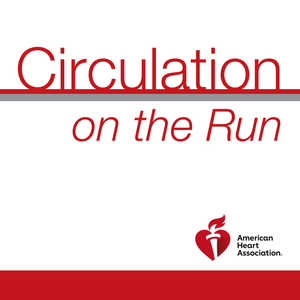
Circulation December 28, 2021 Special
Circulation on the Run
12/27/21 • 28 min
In this week’s edition of Circulation on the Run, Dr. Amit Khera introduces the new Social Media Editors to our Circulation listeners. Please welcome Dr. Vanessa Blumer, Dr. Pishoy Gouda, Dr. Xiaoming (Ming) Jia, Dr. Peder Langeland Myhre, and Dr. Sonia Shah to Circulation.
Dr. Amit Khera:
Welcome to Circulation on the Run, your weekly podcast summary and backstage pass to the journal and its editors. I'm Amit Khera, Associate Editor from UT Southwestern Medical Center in Dallas, and Digital Strategies' Editor for Circulation. And today I have the privilege of sitting in for your usual host, Dr. Carolyn Lam, and Dr. Greg Hundley. Well, two times a year, we really have a special issue, there's no print issue for Circulation in the summer and here in that holiday time. So, fortunately, we get to use this for really whatever we want to do.
Dr. Amit Khera:
And today we have a very special issue. A few months ago, we transitioned over from a prior social media editor team that was Jainy Savla Dan Ambinder, and Jeffrey Hsu. We were able to recruit a fantastic group of new social media editors. You probably have seen their work behind the scenes, but you've not gotten to meet them personally. So, today I have the privilege of introducing you to our new social media editors. This group of five, that's been working for several months and we get to know them a little bit. Get to hear a little bit about their perspective on social media from fellows in training, and also what they've learned so far in their few months in working with Circulation. So, I'm going to go one by one and introduce you. And first I want to introduce you to Dr. Vanessa Blumer. Vanessa, tell us a little bit about yourself.
Dr. Vanessa Blumer:
Thank you so much, Dr. Khera, it is such an honor to be here. And I've had so much fun the months that I've been working for Circulation, it's truly just a privilege to work alongside this talented group. So I'm Vanessa Blumer. I am originally from Caracas, Venezuela, born and raised there, did all of my medical training back home. That included medical school, a year of rural service, or rural medicine. Then I actually did residency training in Venezuela as well. It wasn't really in my plans straight away to come to the US, but a little bit due to the political situation that we all know that Venezuela's going or suffering, I decided to come to the US.
Dr. Vanessa Blumer:
I did residency in the University of Miami, Jackson Memorial hospital, which I loved. Stayed there for a chief year. And then after that came to Duke University to do cardiology fellowship. I'm currently a third year cardiology fellow at Duke, doing a year of research at the DCRI, which I am enjoying a lot, and will be doing heart failure next year. I will be going to Cleveland Clinic for a year of advanced heart failure.
Dr. Amit Khera:
Well, you've had quite a journey, Vanessa, and congratulations, I think your match was relatively recently. So, we're excited to see where your career takes you from here and appreciate your contribution so far. Now I'm going to introduce you to Pishoy Gouda. Pishoy Tell us a little bit about yourself.
Dr. Pishoy Gouda:
Morning, Dr. Khera. My name is Pishoy. I have had the privilege of doing my medical trading all over the world. I was born here in Toronto and moved to Edmonton where I mostly grew up. Since then, I traveled to Galway Ireland where I spent six years to do my undergraduate medical training. Hopped over a short flight and did my Masters in Clinical Trials in the London School of Hygiene and Tropical Medicine before returning to Canada to start my residency training. Got to work with some amazing people in Calgary while I completed my internal medicine training, and then finally returned home to Edmonton where I am in the last few months of my adult cardiology training.
Dr. Pishoy Gouda:
Next year, I'm really excited to start my interventional cardiology training, which is going to be really exciting. Some of my interests, working with social media, wearable technology so working with this great group has been really awesome.
Dr. Amit Khera:
Thank you Pishoy. Obviously lots of travels from you as well, and we definitely appreciate your expertise and interest in social media and in technology. It's been very valuable. Next someone who's closer to my backyard. Ming Jia. Ming, welcome.
Dr. Xiaoming (Ming) Jia:
Hello from Houston, and thank you Dr. Khera. So, it's been a great opportunity to be involved as a social media editor for Circulation. So I'm a current cardiology fellow at Baylor College of medicine in Houston, Texas. Was originally born in China, and grew up in sunny Florida. I did my medical training in Florida as well, and then moved over to Houston, Texas for residency, and now wrapping up my last year in general fellowship....
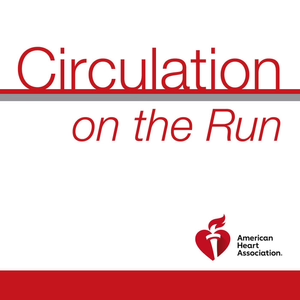
Circulation May 27, 2019 Issue
Circulation on the Run
05/27/19 • 30 min
Dr Carolyn Lam: Welcome to Circulation on the Run, your weekly podcast summary and backstage pass to the journal and it's editors. We're your co-hosts, I'm Dr Carolyn Lam, associate editor from The National Heart Center and Duke National University of Singapore.
Dr Greg Hundley: And I'm Greg Hundley, associate editor for Circulation and director of The Pauley Heart Center at VCU Health in Richmond, Virginia.
Dr Carolyn Lam: Guess what Greg? Right after this we have a double feature discussion. It is all about dapagliflozin with some really, really important self-analyses from the DECLARED-TIMI 58 trial and about heart failure in Type 2 Diabetes with dapagliflozin. But, all of that coming right up only after we have our chat. So Greg, what do you have for us today?
Dr Greg Hundley: My first article is going to be from Dr Mintu Turakhia at the VA Palo Alto healthcare system at Stanford University and is going to discuss the practice variation in anticoagulation prescription and outcomes after device-detected atrial fibrillation. It's a study that has insights from the VA Health Administration. This study evaluated the relationship between oral anticoagulant prescription practice variation in response to new device detected atrial fibrillation and the association to outcomes.
As you know Carolyn, there are no clearly defined thresholds of AF burden, for which to initiate oral anticoagulation.
Dr Carolyn Lam: Interesting, so what did they find, how did they do this?
Dr Greg Hundley: Carolyn, the investigators performed a retrospective cohort analysis using data from the Veterans Health Administration linked to remote monitoring data that included day level AF burden. They included patients with cardiac implantable electronic devices and remote monitoring from the years 2011 through 2014. A CHA2DS2-VASc score of greater or equal to 2, and no prior stroke or oral anticoagulant receipt in the preceding 2 years. They determined the proportion of patients prescribed oral anticoagulants within 90 days following new device-detected AFib across a range of AFib thresholds. Greater than or equal to 6 minutes, all the way up to greater than 24 hours. And they examined sight variation in oral anticoagulation prescription.
Dr Carolyn Lam: And so? What did they find?
Dr Greg Hundley: Well, you ask among 10,212 patients with defibrillators, proportion receiving oral anticoagulation varied based on device detected AF burden. For example, for those greater than or equal to 6 minutes, it was roughly 13% of individuals, for those greater than 24 hours, 27% of individuals received oral anticoagulants. Importantly, there was a substantial sight variation in oral anticoagulation prescription after device-detected atrial fibrillation, for example, greater than one hour. The median was 16%, but it ranged from as low as 3% up to highs of 67%. And so, in adjusted models, oral anticoagulant prescription after device-detected AFib of greater than 24 hours was associated with reduced stroke risk and has a ratio of 0.28, p-value's 0.02, although, the propensity adjusted model was significant when AFib lasted at least 6 minutes.
So, in conclusion, among veterans with implanted devices, device-detected atrial fibrillation is common. There is large practice variation in 90-day oral anticoagulation initiation after new device-detected AFib with low rates of treatment overall, even for episodes greater than 24 hours. Remember, we said that rate was 27%. The strongest association of oral anti-coagulation with reduction in stroke was observed after device-detected Afib of greater than 24 hours. And what this study shows, is that randomized trials are needed to perform these observational findings.
So, Carolyn, how about your next study?
Dr Carolyn Lam: Well, from anti-coagulants to anti-hypertensives. I'm going to tell you about the 6-month results if the RADIANCE Hypertension Solo Trial.
Dr Greg Hundley: Oh, so, what was the RADIANCE Hypertension Solo Trial? Can you remind us?
Dr Carolyn Lam: Glad you asked. So the trial was the one that demonstrated a greater reduction in daytime ambulatory systolic blood pressure at 2 months by endovascular ultrasound renal denervation compared with a sham procedure among patients who were not treated with anti-hypertensive medications. So the current paper, led by Michel Azizi from Université Paris-Descartes and colleagues, now report the 6-month results following the addition of a recommended, standardized, stepped-care anti-hypertensive treatment to the randomized endovascular procedure under continued blinding to the initial treatment.
Now, remember these were patients with uncontrolled combined systolic and diastolic hypertension who were initially off medications for two months following randomization. Now, between two and five months, if the monthly measured home blood pressure was more than 135/...
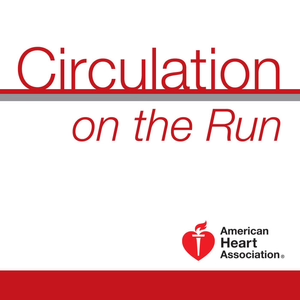
Circulation March 27, 2018 Issue
Circulation on the Run
03/26/18 • 25 min
Dr Carolyn Lam: Welcome to Circulation on the Run, your weekly podcast summary and backstage pass to the journal and its editors. I'm Dr. Carolyn Lam, associate editor from the National Heart Centre and Duke National University of Singapore. Our featured paper this week is an in-depth paper on the cardiovascular and metabolic heterogeneity of obesity, and we will have a discussion with the authors on the clinical challenges, implications for management, and much more coming right up after these summaries.
How does MRI quantification compare with standard Doppler echo approach to identify organic mitral regurgitation and predict adverse outcomes? Well, our first paper this week addresses this question, led by first and corresponding author, Dr. Penicka from the Cardiovascular Center OLV Clinic in Belgium. These authors studied 258 asymptomatic patients with preserved left ventricular ejection fraction and chronic moderate and severe organic mitral regurgitation by echo. All patients underwent MRI to quantify regurgitant volume of this organic mitral regurgitation by subtracting aortic flow volume from the total left ventricular stroke volume. Severe organic mitral regurgitation was defined as a regurgitant volume of greater or equal to 60 milliliters.
The authors found that mean echo-derived regurgitant volume was an average 17 milliliters larger than the MRI-derived regurgitant volume. Concordant grading of organic mitral regurgitation severity with both techniques was observed in 76% of individuals. In the remaining 24% of individuals with discordant findings between the two techniques, this was mainly observed in patients with late systolic, eccentric, or multiple jets.
The MRI-derived regurgitant volume showed the highest discriminative power among all the imaging parameters to predict all cause mortality or its combination with development of indication for mitral valve surgery. Thus, this study demonstrates that MRI-derived assessments of organic mitral regurgitation are clinically accurate to identify asymptomatic patients with severe organic mitral regurgitation and at first outcomes. This may be particularly so when the mitral regurgitation is late systolic, eccentric, or multiple in jets where misclassification may occur with echo-derived approach.
The next study is the first large population-based study to analyze the association between low-dose ionizing radiation from cardiac procedures and incident cancer in adults with congenital heart disease. First author Dr. Cohen, corresponding author Dr. Marelli from McGill University, studied the population from the Quebec Congenital Heart Disease Database and performed a nested case control study comparing cancer cases with controls matched on sex, congenital heart disease severity, birth year, and age. They found that the cumulative incidence of cancer in adults with congenital heart disease between the ages of 18 and 64 years was 15%. The cumulative low-dose ionizing radiation exposure from cardiac procedures was independently associated with incident cancer after adjusting for age, sex, year of birth, congenital heart disease severity and comorbidities.
Results were similar using either the number of procedures or estimates of the effective doses with a possible dose-related response relationship between the low-dose ionizing radiation exposure level and cancer risk. Thus, increasing exposure to low-dose ionizing radiation from cardiac imaging in adults with congenital heart disease raises concerns about life-long risk of malignancy. Confirmation of these findings by prospective studies is needed to reinforce policy recommendations for radiation surveillance in patients with congenital heart disease.
The next study characterizes the long-term dynamics of potassium in heart failure and its associated risk of mortality. First and corresponding author, Dr. Nunez from Hospital Clinic University of Valencia in Spain, evaluated the prognostic implications of long-term longitudinal monitoring and dynamics of serum potassium in a prospective and consecutive cohort of patients following a hospitalization for acute heart failure. In these patients, serum potassium was measured at every physician-patient encounter, including hospital admissions and ambulatory settings.
The authors found that on a continuous scale, the followup trajectory of serum potassium levels independently predicted mortality through a U-shaped association with higher risk at both ends of the distribution, and the same was true using potassium categories. Furthermore, dynamic changes in potassium were independently associated with substantial differences in mortality risk. Persistence of normal potassium levels was linked to a higher risk of death compared to patients who maintained or returned to normal values. Conversely, potassium normalization was independently associated with a lower mortality risk.
These findings ...
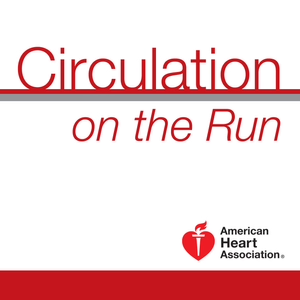
Circulation Jul 18, 2017 Issue
Circulation on the Run
07/17/17 • 17 min
Dr. Carolyn Lam: Welcome to Circulation on the Run, your weekly podcast summary and backstage pass to the journal and its editors. I'm Dr. Carolyn Lam, Associate Editor, from the National Heart Center and Duke-National University of Singapore.
Now, the SGLT2 inhibitor, empagliflozin, has been shown to improve outcomes in the EMPA-REG OUTCOMES trial. But do these benefits also apply in the real world, and to other SGLT2 inhibitors as a class? Well, we may just have some answers this week in the CVD-REAL study. More soon right after these summaries.
The first original paper this week uncovers the mechanism of beneficial action of T-cells for proper healing after myocardial infarction. Now, the pro-inflammatory danger signal, adenosine triphosphate or ATP, is released from damaged cells, and degraded by the ectonucleotidase CD73 to the anti-inflammatory mediator, adenosine.
Using newly-generated CD4-CD73 null mice, first author, Dr. Borg, corresponding author, Dr. Schrader, and colleagues from Heinrich Heine University of Düsseldorf in Germany, showed that a lack of CD73 on T-cells enhanced tissue fibrosis and worsened myocardial function in the remodeling phase after myocardial infarction.
T-cells migrated into the injured heart and upregulated their enzymatic machinery to enhance the extracellular degradation of ATP to adenosine. T-cells lacking CD73 showed accelerated production of pro-inflammatory and profibrotic cytokines. Finally, the adenosine 2B receptor was upregulated on cardiac immune cells in the remodeling phase.
In summary, therefore, local adenosine formation by CD73 on T-cells appears to be the body's own defense mechanism to control inflammation induced by myocardial infarction. This is a mechanism that might be exploited to promote healing or remodeling by specifically targeting the adenosine 2B receptor in the infarcted heart.
The next paper provides insights on genetic determinants of susceptibility to peripheral artery disease, and specifically puts the spotlight on Bcl-2-associated athanogene-3, or Bag3, which is a cell chaperone protein previously identified in a genetic screen for determinants of tissue loss with hindlimb ischemia.
In the current study, Dr. McClung from East Carolina University, Brody School of Medicine in Greenville, North Carolina, and colleagues, used adeno-associated viruses to show that an isoleucine to methionine variant at position 81 in Bag3 was sufficient to confer susceptibility to ischemic tissue necrosis in BALB/c mice.
In a series of elegant experiments, they demonstrated that Bag3 was a modulator of ischemic muscle necrosis and blood flow. In summary, this study provides evidence that genetic variation in Bag3 plays an important role in the prevention of ischemic tissue necrosis, and highlights a pathway that preserves tissue survival and muscle function in the setting of ischemia.
The next study provides insights into inflammatory atherogenesis by studying psoriasis, a chronic inflammatory disease associated with an accelerated risk of myocardial infarction. First author, Dr. Lerman, corresponding author, Dr. Mehta from the NHLBI, National Institutes of Health in Bethesda, United States, and colleagues, hypothesized that the increased cardiovascular risk observed in psoriasis would be partially attributable to an elevated subclinical coronary artery disease burden composed of non-calcified plaques with high-risk features.
To test this hypothesis, they compared total coronary plaque burden, non-calcified coronary plaque burden, and high-risk plaque prevalence between 105 psoriasis patients, 100 older hypolipidemic patients eligible for statin therapy, and 25 non-psoriasis healthy volunteers. All patients underwent CT coronary angiography, and a sample of the first 50 psoriasis patients were scanned again at one year following therapy.
The authors found that patients with psoriasis had greater non-coronary burden and increased high-risk plaque prevalence compared to healthy volunteers. Furthermore, compared to older hypolipidemic patients, patients with psoriasis had elevated non-calcified burden, and equivalent high-risk plaque prevalence. Finally, improvement in skin disease severity was associated with an improvement in non-calcified coronary burden at one year.
The clinical implications are that patients with psoriasis have similar coronary artery disease risk as hyperlipidemic patients one decade older, and these patients with psoriasis should be screened earlier for cardiovascular disease and educated about their elevated risks. Further investigations focus on the longitudinal impact of psoriasis treatment on high-risk plaque morphology, as well as on the extent of cardiovascular risk mitigation in randomized trials.
Well, those were your summaries. Now for our feature discussion. Now, we've heard of the EMPA-REG OUTCOME trial, that prospect...
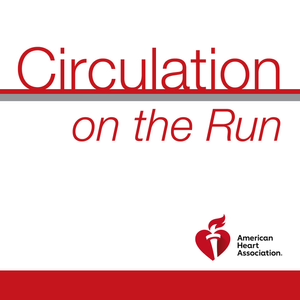
Circulation October 5, 2021 Issue
Circulation on the Run
10/04/21 • 30 min
This week's episode features highlights from Circulation's 2021 Cardiovascular Surgery Themed Issue. Join Executive Editor James de Lemos along with Associate Editors Marc Ruel and Michael Fischbein as they discuss all of the articles found in this special issue.
Dr. James de Lemos:
Hi, my name is James de Lemos. I'm a cardiologist at University of Texas Southwestern Medical Center in Dallas, and the executive editor for Circulation. And I'm standing in for Carolyn and Greg today to host our annual cardiovascular surgery-themed issue podcast. And I'm delighted to be joined by Marc Ruel, professor and chairman of the Division of Cardiothoracic Surgery at the Ottawa Heart Institute, and the director of cardiac surgery content for Circulation, as well as Michael Fischbein, associate professor of cardiothoracic surgery at Stanford and the director of the thoracic and aortic programs there. Marc, thanks for all that you do for Circulation with cardiovascular surgery content and let me turn it over to you to introduce the issue.
Dr. Marc Ruel:
Well, James, thank you very much. We're very delighted to introduce this 2021 cardiovascular surgery-themed issue. We already feel that this is going to put together some of the very best science at the interface between cardiac surgery or cardiovascular surgery, I should say, because there's some peripheral vascular topics as well, cardiology, and as well, mechanistic research. I think you're going to find that this is really a very jam-packed issue that has a lot of important messaging that will change the field going forward.
Dr. Marc Ruel:
Also, this year, I want to highlight a couple of changes in the preparation of the issue. I want to first thank the tremendous contributions over the years to Circulation and to the entire field of cardiac surgery of Tim Gardner. Really, Tim, is an absolute giant. I think he's the only person known to me who was both president of the American Heart Association and of the ATS in the field of cardiac surgery.
Dr. Marc Ruel:
Tim has really paved the way for us to develop and enhance this issue over the years, and I think 2021 is a testament to his legacy, because I would argue it's our strongest issue ever. And I also want to introduce Mike Fischbein, James and everybody, who's associate professor at Stanford. Mike is a thoracic-aortic surgery expert, also runs a translational lab, so has a very dedicated, basic science and translational surgical science expertise. So we're very, very happy to welcome Mike to the themed issue of Circulation.
Dr. James de Lemos:
Well, thanks Marc. We'll do is follow the order of the issue so that our readers and listeners can really get a sense of the content and its various types that we're publishing this year. And the issue starts with a provocative frame of reference piece from Verma and colleagues discussing the surgical left atrial appendage occlusion. Marc, what were your thoughts on that piece?
Dr. Marc Ruel:
It's obviously a game changer in cardiac surgery. I was privileged to serve as a part of the BSMB for this trial, and we can now say we toyed with the decision as to stop the trial at the appropriate time. And that's always a very difficult BSMB decision, which, frankly, you want to get it right, and you don't want to err on either side. Anyways, LAAOS III was recently published and we have a fantastic editorial in Circulation from Subodh Verma, Deepak Bhatt, and Elaine Tseng saying, which essentially highlights the importance of the trial for practice of cardiac surgery.
Dr. Marc Ruel:
It probably is that no patient who comes to cardiac surgery with a history of atrial fibrillation should, based on those findings, not have their atrial appendage ablated. There's already very little caveat, the trial has not shown what was feared prior with regards to an increased incidence of heart failure or symptoms. And really, the surgery has been effective. The ablation of the left atrial appendage is very effective in diminishing the primary outcome or of stroke, ischemic stroke or cerebral hemorrhage.
Dr. Marc Ruel:
And essentially, this was, in most cases, a surgical ablation, so cut and sew. So we don't have all the information about either endovascular devices or even ablative devices at the time of surgery. But it was a very large trial, it was a publicly funded trial. It is really the authoritative information in the field that's available so far.
Dr. Marc Ruel:
Mike, what are your thoughts around this? Do you now come to any one of your patients needing a cardiac surgical cooperation with a history of atrial fibrillation and thinking that I now need to address the left atrial appendage? Is that what you get out of this paper as well?
Dr. Michael Fischbein:
Yeah. Thanks, Marc. I think that...
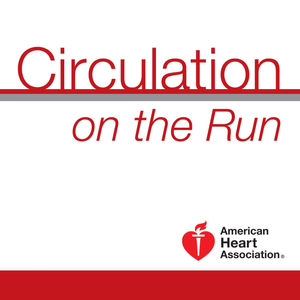
Circulation August 2, 2016, Issue
Circulation on the Run
08/01/16 • 18 min
Carolyn: Welcome to Circulation on the Run, your weekly podcast summary and backstage pass to the journal and its editors. I'm doctor Carolyn Lam, associate editor from the National Heart Center and Duke National University of Singapore. Joining on me in just a moment are two guests to discuss a very exciting new category of papers, known as the white paper. The topic for today is an evolution within the field of current day percutaneous coronary intervention that of the treatment of higher risk patients with an indication for revascularization. But first, here is your summary of this week's journal.
The first study is from first author doctor Jolis and corresponding author doctor Grainger, from the duke clinical research institute in Durham, North Carolina. These authors describe the American Heart Association Mission: Lifeline, STEMI Systems Accelerator. This exciting project represents the largest effort ever attempted in the United States to organize ST segment elevation myocardial infarction care across multiple regions, including 484 hospitals, 1,253 emergency medical services across sixteen regions and involving more than 23,800 patients.
Indeed, this project aims to organize coordinated regional reperfusion plans so as to increase the proportion of patients treated within guideline goals, that is a first medical contact to devise time of less than 90 minutes for STEMI patients directly presenting to PCI capable hospitals and less than 120 minutes for transferred patients.
The authors observed that during the study period of July 2012 to December 2013, there was a significant increase in the proportion of patients meeting these guideline goals, including an increase from 50% to 55% of STEMI patients directly presenting via emergency services and from 44% to 48% of those transfer patients. The authors concluded that these improvements, while modest, suggest the potential for reductions in total ischemic time and happily observe corresponding trends towards lower in-hospital mortality compared with the national data towards the end of the measurement period. Indeed, the tickle message is that the findings support continued efforts to implement regional STEMI networks.
The next study is by first author doctor Hidari and corresponding author doctor Kuang from the Brigham and Women's Hospital in Boston, Massachusetts. They describe the OMEGA-REMODEL randomized clinical trial. This is a multi-center, double-blinded, placebo control trial of 358 participants presenting within acute myocardial infarction who are randomized to six months of high dose omega-3 fatty acids at four grams daily versus placebo.
Cardiac magnetic resonance imaging was used to assess cardiac structure and tissue characteristics at baseline and following therapy with the primary study in point being a change in left ventricular systolic volume index. Indeed, the authors reported that compared to placebo, patients who received four grams daily omega-3 fatty acids experienced significant improvements in both left ventricular and systolic volume and surrogate measures of non-infarct myocardial fibrosis during the six months of treatment.
These remodeling benefits further followed a dose response relationship with the rise in the in vivo omega-3 fatty acid levels as quantified by your red blood cell index. They concluded that four grams daily of omega-3 fatty acid is a safe and effective treatment in improving cardiac remodeling in patients receiving current guideline based post-myocardial infarction therapies. Indeed, this does warrant perspective clinical studies.
The third study is by first author doctor Liu and corresponding author doctor Sia from University of Texas, Houston Medical School and Colleagues, who sought to understand the molecular basis underlying adaption to high altitude hypoxia. By conducting both human high altitude and most genetic studies, the authors identified a novel functional role of CD73-dependent elevations in extracellular adenosin signolin in response to high altitude hypoxia.
This led to sequential activation of a readthrough site AMP-activated protein kinase, which in turn resulted in increased 2,3-bisphosphoglyceric production and enhanced oxygen release capacity to peripheral tissues. Thus, reducing tissue hypoxia, inflammation and pulmonary injury. These findings have significantly added to our understanding of the molecular mechanisms underlying adaption to hypoxia. Thereby, opened novel therapeutic possibilities for the prevention and treatment of hypoxia related conditions.
The final study is from first author doctor Yen and corresponding author doctor Chen from the National Taiwan University and Colleagues, who aimed to determine the effect of betel nut chewing and paternal smoking on the risks of early metabolic syndrome in human offspring. The author studied more than 13,000 parent-child trios identified from more tha...
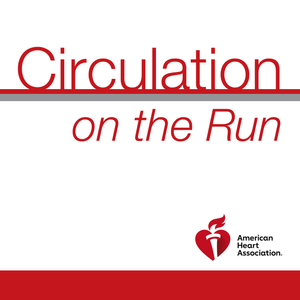
Circulation June 21/28, 2022 Issue
Circulation on the Run
06/20/22 • 23 min
This week, please join author Roderick Tung, editorialist William Stevenson, and Associate Editor Sami Viskin as they discuss the article "First-Line Catheter Ablation of Monomorphic Ventricular Tachycardia in Cardiomyopathy Concurrent with Defibrillator Implantation: The PAUSE-SCD Randomized Trial" and the editorial "Can Early Ablation of Ventricular Tachycardia Improve Survival?"
Dr. Greg Hundley:
Welcome listeners to this June 21st, 2022 issue of Circulation on the Run. And I'm Dr. Greg Hundley, associate editor and director of the Pauley Heart Center at VCU Health in Richmond, Virginia. Listeners, what a very interesting forum that we're going to have in this session today with Dr. Rod Tung, bringing us an article from first line catheter ablation of monomorphic ventricular tachycardia in cardiomyopathy with concurrent defibrillator implantation. Some results from the Pause sudden cardiac death randomized clinical trial.
This article is really interesting because it is collecting data from multiple centers from multiple countries in Asia. But before we get to that article, why don't we grab a cup of coffee and go through some of the other articles in the issue? Well, the first is entitled cardiovascular magnetic resonance for rejection surveillance after cardiac transplantation. And it comes to us from Dr. Jim Pouliopoulos from the Victor Chang Cardiac Research Institute. In this study, CMR based multiparametric mapping was initially assessed in a prospective cross-sectional fashion to establish agreement between cardiovascular magnetic resonance and endomyocardially based measures of cardiac rejection and determine the CMR cutoff values between various cardiac rejection grades.
Then after that, a prospective randomized noninferiority pilot study was undertaken in adult orthotopic heart transplant recipients who were randomized at four weeks post orthotopic heart transplant to either CMR or endomyocardially based rejection surveillance. And clinical endpoints were also assessed at 52 weeks. And so listeners, what did this investigative team find? Well, despite similarities in immunosuppression requirements, kidney function and mortality between the groups, the rates of hospitalization and the rates of infection were lower in the CMR group.
On 15 occasions, patients that were randomized to the CMR arm underwent endomyocardial biopsy for clarification or logistic reasons, representing a 94% reduction in the requirement for endomyocardially based surveillance. And so listeners, a noninvasive CMR based surveillance strategy for evidence of rejection in the first year after orthotopic heart transplantation is feasible. And interesting, listeners, these results really suggest the possibility for further studies to confirm whether CMR and perhaps in combination with other modalities could be used to survey orthotopic heart transplant patients for acute rejection without necessarily having to undergo endomycardial biopsy. There's an excellent editorial by Dr. Jim Fang from the University of Utah who also reviewed this paper.
Well, listeners, let's next turn to the world of preclinical science. And this paper comes to us from professor Simon Sedej from Medical University of Graz. It involves the insulin and insulin growth factor one or IGF-1 pathway. And that is known as a key regulator of cellular metabolism and aging. Now, although its inhibition promotes longevity across species, the effect of attenuated IGF-1 signaling on cardiac imaging really remains controversial. So what did the authors find? Well, they found that cardiomyocyte IGF-1R over expression in mice resulted in physiological hypertrophy and superior cardiac function in early life, but led to accelerated cardiac aging, heart failure and reduced lifespan in late life. Mechanistically, increased cardiomyocyte IGF-1R signaling accentuated cardiac dysfunction by reducing autophagy and mitochondrial oxidative capacity at old age, and therefore clinically pharmacologic inhibition of cardiac IGF-1R signaling in late life could suppress the age related deterioration of cardiac performance and perhaps increase lifespan. And therefore age should be considered as a major outcome determinant in future clinical trials, testing IGF-1R P13K inhibitors for cardiac benefits.
Well listeners, what is our next study? And this study is somewhat related to our feature discussion, which we'll get to in a few minutes. It's from Dr. Paolo Della Bella from San Rafael Hospital, and it is a two phase prospective multicenter randomized clinical trial that was performed to evaluate the benefit of ablation after first implantable cardiovert defibrillator, or ICD shock. And patients with ischemic or nonischemic dilated cardiomyopathy and primary or secondary prevention indication for ICD were enrolled in an initial observational phase until first appropriate shock. And that was phase A of the study. Then afterwards, they...
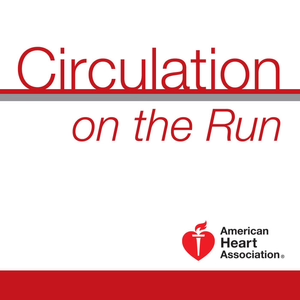
Circulation July 19, 2016 Issue
Circulation on the Run
07/18/16 • 18 min
Speaker 1: Welcome to Circulation on the Run, your weekly podcast summary and backstage pass to the journal and its editors. I'm Dr. Carolyn Lam, Associate Editor from the National Heart Center and Duke National University of Singapore. Joining me in just a moment are Dr. James Gammie and Dr. Timothy Gardner to discuss our feature paper this week describing the first-in-human clinical experience with a novel transapical beating heart mitral valve repair.
First, here are the highlights of this week's journal. The first paper is from co-primary authors doctors Yoon, [Tsue 00:00:49], and [Cha 00:00:50] as well as corresponding authors Dr. [Che 00:00:55] and Dr. Kim from the Seoul National University College of Medicine. These authors examine mechanisms underlying diabetes-induced microvasculopathy, testing the hypothesis that Notch signaling in endothelial cells may play an important role in this condition.
The authors tested this hypothesis by inducing diabetes in eight-week-old adult mice using intravenous streptozotocin. They then modulated endothelial Notch signaling using chemical inhibitors in both wild type and transgenic mice. Results showed that the Notch ligand called Jagged-1 was markedly increased in endothelial cells of diabetic mice. Using endothelial specific Jagged-1 knocked down mice, they found that blocking Jagged-1 prevented diabetic microvaculopathy. Furthermore, using the induceable endothelium-specific Jagged-1 knocked down mice, blocking Jagged-1 even at four weeks after the establishment of diabetic microvaculopathy could reverse the condition.
In summary, these findings show that diabetes induces Jagged-1 over expression and suppresses Notch signalling in endothelial cells leading to diabetic microvaculopathy in adult mice. The clinical implications are that dysregulated intercellular Notch signalling may therefore represent a novel molecular target in the treatment of diabetic retinopathy.
The next study by Dr. Smith and colleagues at the Leiden University Medical Center in the Netherlands evaluated the association between LDL cholesterol variability and four cognitive domains at 30 months in the 4428 participants of the prosper study.
Results showed that a higher LDL cholesterol variability was associated with lower cognitive test performance for intermediate and delayed memory-related tasks, selective attention, and processing speed. Higher LDL cholesterol variability was also associated with lower cerebral blood flow and greater white matter hyperintensity load in an MRI substudy of 535 patients.
In addition to being independent of the mean LDL cholesterol levels and of clinically overt cardiovascular diseases, these associations were present both in the placebo and pravastatin treatment [inaudible 00:03:43] of the prosper trial suggesting that the findings did not mearly reflect pleiotropic effects of statins or of nonadherence.
The study importantly provides the first observational evidence that lipid variability, not just absolute or mean values, but the variability, maybe of importance to neurocognitive function and thus contributes while understanding potential pathways of neurocogniticve decline.
The next study is by first author, Dr. [Huh 00:04:19], and corresponding author, Dr. Ralph, from the Menzies School of Health Research Charles Darwin University in Australia. These authors aimed to investigate the long term outcomes from acute rheumatic fever and rheumatic heart disease.
They achieved this aim by using linked data between the rheumatic heart disease register, hospital data, and death register for residents of the northern territory of Australia, and examined 1248 patients with rheumatic heart disease as well as 572 patients with acute rheumatic fever in the period 1997 to 2013.
The main findings were that in the first year after an acute rheumatic fever episode, the incidents of progression to rheumatic heart disease was 10 times higher than acute rheumatic fever recurrence; 10% of rheumatic heart disease patients had severe disease at diagnosis. The presence of comorbidities was associated with higher incidence of rheumatic heart disease complications and mortality. In particular, comorbid renal failure and hazardous alcohol use accounted for 28% of the access indigenous mortality.
These findings have global relevance for settings with high acute rheumatic fever, rheumatic heart disease rates and really emphasized the need for integrated chronic disease management strategies for these patients.
The final paper is by first author Dr Bettencourt, corresponding author Dr. Blankstein, and colleagues from Brigman and Women's Hospital in Boston, Massachusetts. These authors sought to answer the question what is the most appropriate score for evaluating the pretest probability of obstructive coronary artery disease?
To answer the question, the authors compared t...
Show more best episodes

Show more best episodes
FAQ
How many episodes does Circulation on the Run have?
Circulation on the Run currently has 456 episodes available.
What topics does Circulation on the Run cover?
The podcast is about Life Sciences, Health & Fitness, Cardiology, Medicine, Podcasts and Science.
What is the most popular episode on Circulation on the Run?
The episode title 'Circulation April 25, 2023 Issue' is the most popular.
What is the average episode length on Circulation on the Run?
The average episode length on Circulation on the Run is 24 minutes.
How often are episodes of Circulation on the Run released?
Episodes of Circulation on the Run are typically released every 7 days.
When was the first episode of Circulation on the Run?
The first episode of Circulation on the Run was released on Apr 27, 2016.
Show more FAQ

Show more FAQ